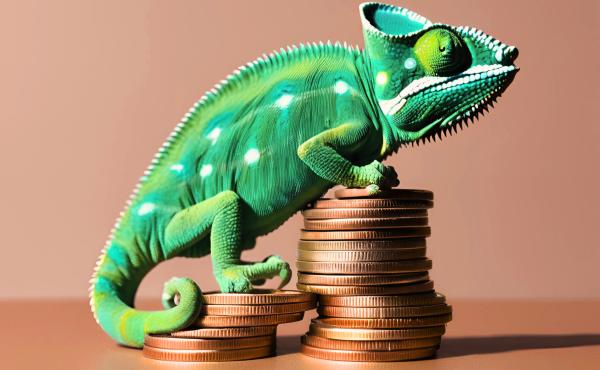
The ECGI blog is kindly supported by

Scoring Profits? The Impact of Private Equity Investments on Soccer Clubs
In ‘Scoring Profits? The Impact of Private Equity Investments on Soccer Clubs’, I examine the interplay between private equity ownership and performance outcomes. The interplay between private equity (PE) ownership and performance outcomes in soccer clubs raises fundamental questions about the nature of these organizations: Are soccer clubs profit-maximizing entities akin to traditional firms, or do they embody characteristics of non-profit organizations, prioritizing community and social outcomes? This paper investigates how PE investments impact financial value and social value, particularly whether financial outcomes come at the expense of team dynamics and team performance.
According to a recent analysis by a PitchBook senior reporter, over 20% and nearly 30% of the European football clubs in the main leagues are backed by private equity investors from the United States. Beginning with 2019, this specific sport has seen a rise in not only private equity financing, but involvement also primarily by firms and funds located in the United States. This increase in private wealth investments is a result of a rise in popularity for soccer in the U.S., as well as an expansion in funds created in devotion to sports.
The European football market, a multibillion-dollar industry, presents high exit multiples and has consistently outperformed traditional public indices in terms of growth. In 2022, over six billion dollars were invested in the industry, comprising both majority and minority stakes, which created a substantial pool of capital for clubs to leverage. U.S. private equity firms, experienced in sports investment and management, quickly emerged as crucial investors. These firms not only provided much needed funding but also offered strategic partnerships and management expertise.
The paper examines 28 private equity male clubs and 68 non-private-equity male clubs and 15 private equity female clubs and 52 non-private-equity female clubs (and their players). The majority of the deals in the sample are buyout and growth capital deals, even though there are co-investment deals in the sample. In addition to identifying the month and the year that private equity invests in football clubs, I also identify the season in which the investment takes place. I use a staggered difference-in-differences model to isolate the causal long-run effect of private equity investments on individual players’ performance and team match performance, players’ salaries, and clubs’ financials and the causal short-run effect of private equity investments on chairman, management, and squad changes.
However, this financial growth is accompanied by declines in on-field performance, especially in away games and more so in female teams, where key performance metrics, such as goals, points per game, and overall possession diminish post-investment. For example, becoming a PE-owned club results in a decrease in away goals for male teams. A PE investment reduces away goals by 0.186 goals per match. This accounts for approximately 18% of the pre-treatment mean and represents a moderate economic impact, equivalent to 0.17 of variability. For female teams, this decline is even more dramatic. A PE investment reduces away goals by 0.813 goals per match. This represents a substantial reduction of approximately 87% of the pre-treatment mean and corresponds to 0.68 of variability, indicating a strong economic impact. This highlights a much greater disruption in female teams' away performance compared to male teams. This suggests that clubs under PE ownership might struggle with away games, possibly due to changes in team dynamics, tactics, or travel-related factors.
The interaction and coordination between players significantly influence team performance. Player co-appearances in matches reflect these interactions as teammates develop chemistry and understanding through shared playing time. Measuring degree centrality (frequency of interactions), closeness centrality (efficiency of interactions), and betweenness centrality (role of bridge players) relies on mapping these co-appearances to quantify players’ roles within the team network. In addition, as the paper shows, PE investments bring squad, management, and chairman changes which potentially further disrupts team dynamics. Player appearances highlight how these changes affect core players’ positions in the network and continuity and consistency in team dynamics. By linking co-appearance data to network metrics, I can assess how well-connected the team remains and correlate it with performance outcomes in home and away games.
I document that degree centrality, betweenness centrality, and closeness centrality among players decline following a PE deal, which correlates with and has a direct and negative impact on home and away match performance. These metrics reflect the interconnectedness and collaboration among players. Disruptions stemming from managerial and squad turnover – a hallmark of PE restructuring – undermine team cohesion, which is especially critical during high-pressure away games.
Based on the analysis of PE investments in European football, the paper reveals significant insights into their multifaceted impact. While PE investments are highly effective in enhancing financial outcomes (consistent with the profit-maximizing objectives of PE firms), I show this comes at the expense of on-field performance, which is a key social value for fans, players, and the broader football community. The shift toward profit-driven priorities risks alienating fans and stakeholders who value on-field success and team loyalty over financial metrics. As PE’s influence in European football grows, these trade-offs will continue to shape the debate around the role of private equity in sports.
........................
References
[1] Kemplay, Marie,2023. US private capital scores big in European soccer. Pitchbook.
[2] Stevenson, David, 2023. Q&A: How LBK seeks to create value in European soccer. Pitchbook. Q&A: How LBK seeks to create value in European soccer - PitchBook.
_______________
By Kristina Lalova (Michigan State University – Eli Broad College of Business)
The ECGI does not, consistent with its constitutional purpose, have a view or opinion. If you wish to respond to this article, you can submit a blog article or 'letter to the editor' by clicking here.



